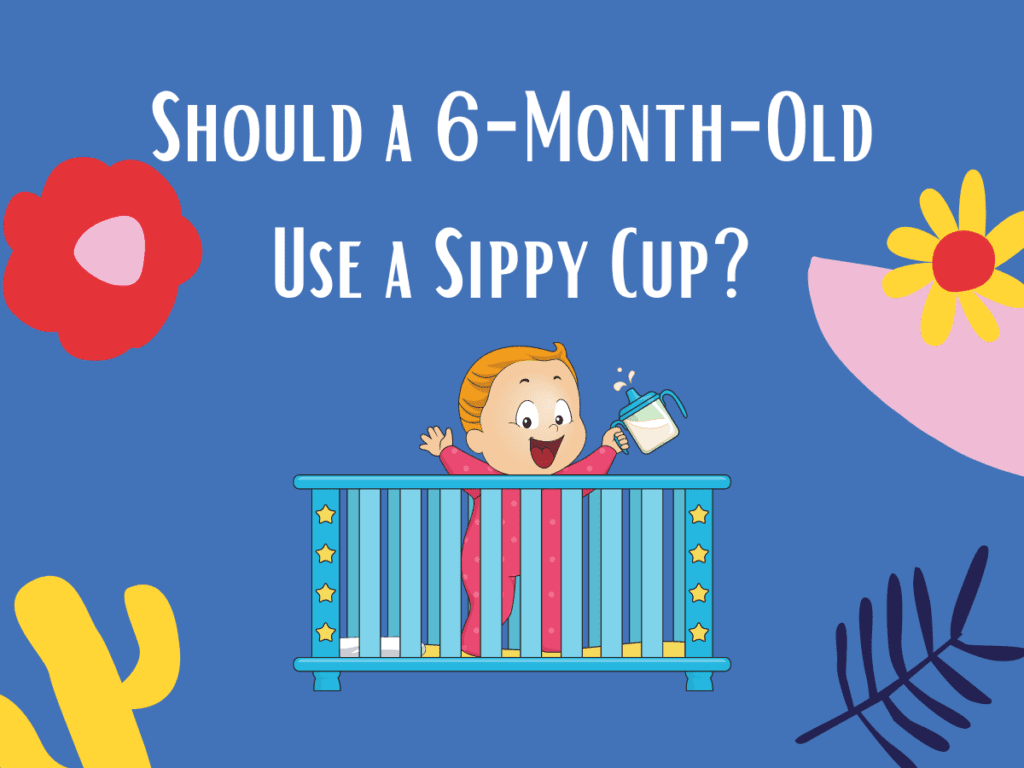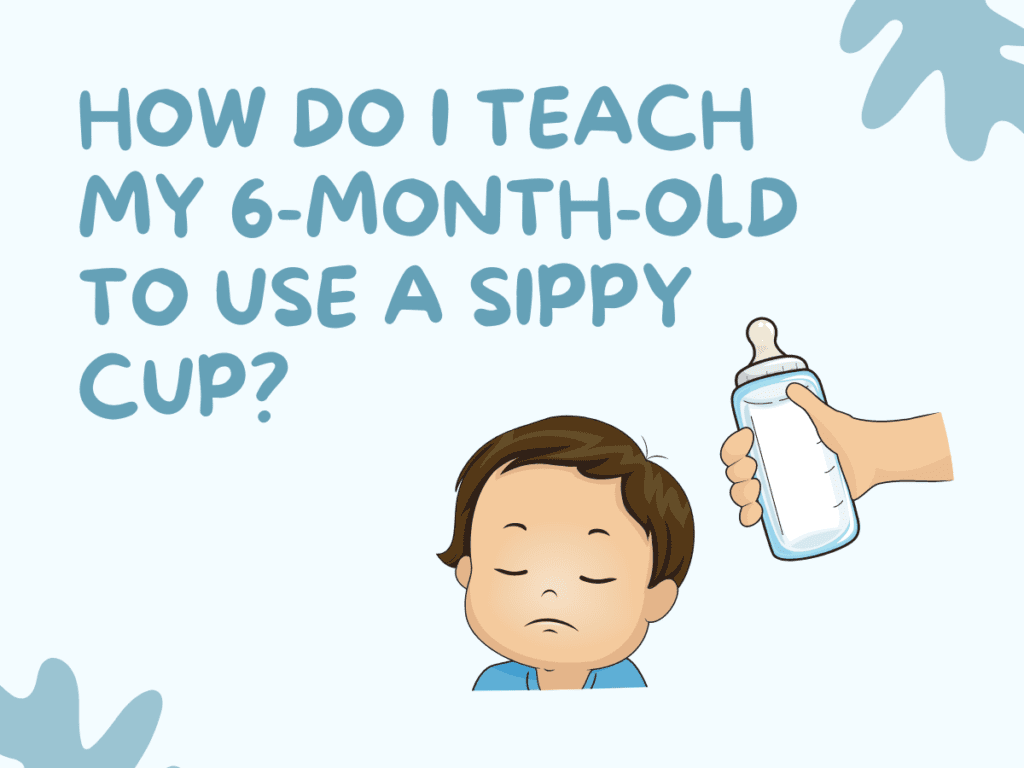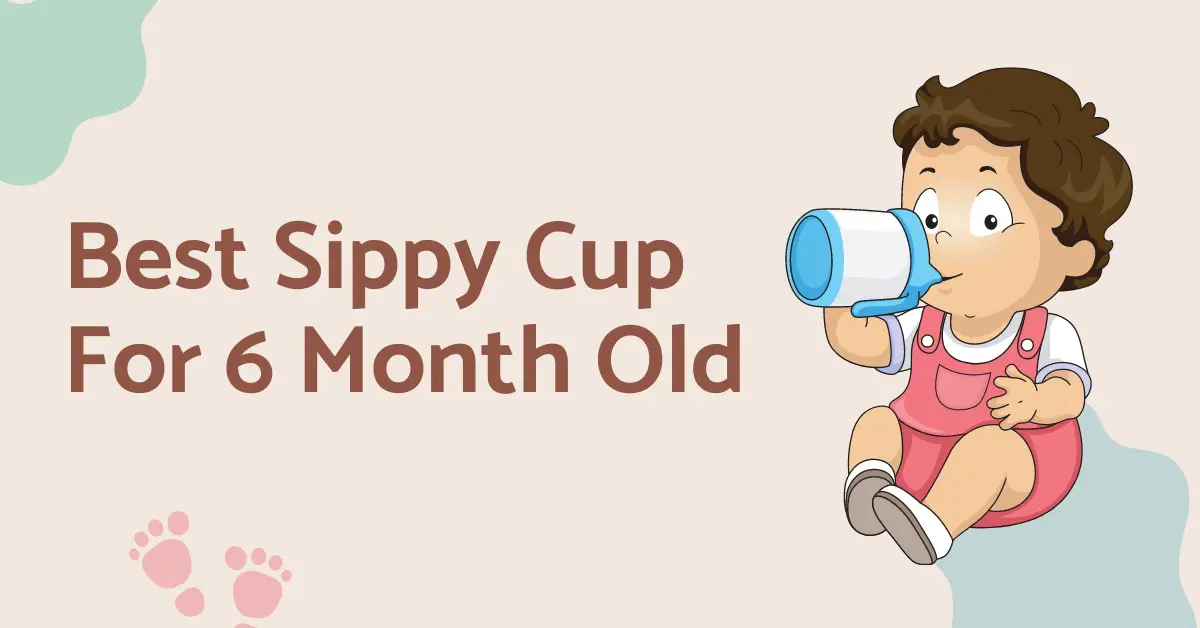We always want the best for our children, especially when it comes to their health and development. One of the key milestones in a baby’s first year is the transition from breast or bottle feeding to using a cup. This is where the sippy cup comes into play. A sippy cup not only helps your baby learn to drink independently but also plays a crucial role in their oral development. Therefore, choosing the right sippy cup for your 6-month-old is important.
In this article, we will dive into the topic of finding the best sippy cup for a 6-month-old. We will answer questions such as “What sippy cup is best for a 6-month-old?”, “What kind of cup should a 6-month-old use?”, “Should a 6-month-old use a sippy cup?”, “Should a 6-month-old use a bottle or straw?”, and “How do I teach my 6-month-old to use a sippy cup?”. By addressing these questions, we aim to provide guidance to parents navigating this exciting and sometimes challenging phase of their baby’s growth.

Best Sippy Cups for 6-Month-Olds
- Tommee Tippee Superstar Weighted Straw Cup for Toddlers: This 10oz cup is perfect for toddlers. The cup is weighted to keep it steadier when put down. It is a solid bottle too to help make it tantrum-proof.
- NUK Learner Cup: It’s a smaller bottle at 5 oz in size but has easy grip handles and a spill-proof spout designed to be gentle on gums. It also has an air vent to help reduce swallowed air and gas.
- Dr. Brown’s Milestones, Baby’s First Straw Cup: This sippy cup with a straw is suitable for babies aged 6 months and above. It’s a large cup with a 9 oz capacity and a travel-friendly lid that can be slid closed to prevent spills on the move.
- Olababy Silicone Training Cup with Straw Lid: This cup is suitable for babies aged 6 months to 12-18 months. The cups are translucent to make it easy to see inside the cup. It also has a wide, weighted base to help prevent the cup from being tipped over and spilt.
- Munchkin Miracle 360 Trainer Cup: This 7oz cup comes in a pack of two and is available in a variety of colours. It’s a popular choice among parents due to its innovative design that allows drinking from any edge of the cup. The cup then automatically seals when your child is done drinking to help prevent spills.
- Munchkin Any Angle Weighted Straw Trainer Cup with Click Lock Lid: This 7oz cup comes with a straw brush for easy cleaning. Its main feature is a weighted straw that allows your baby to drink from any angle. It also has a flip-top lid to cover the straw and prevent spills during travel.
Remember, the best sippy cup for your 6-month-old will depend on their individual needs and preferences. Consider factors such as the cup’s design, ease of use, and materials when making your choice.
What Kind of Cup Should a 6-Month-Old Use?
When it comes to choosing a cup for a 6-month-old, it’s important to consider their developmental stage. At this age, babies are just starting to learn how to hold things and may not have the coordination to drink from a regular cup yet. Here are some factors to consider:
- Ease of Grip: Cups with handles or those that are easy to grip are ideal for 6-month-olds. They are just learning to grasp objects and a cup with handles can make it easier for them to hold and control.
- Spill-Proof Design: At this age, spills are inevitable. A cup with a spill-proof design can help minimize messes and make the transition from bottle to cup smoother.
- Soft Spout or Straw: Some experts recommend sippy cups with soft spouts or straws as they are gentler on a baby’s gums and emerging teeth compared to hard spouts.
- Size and Capacity: The cup should not be too big or heavy for the baby to hold. A capacity of 5 to 7 ounces is usually sufficient for a 6-month-old.
- Material: The cup should be made of safe materials that are free from harmful chemicals like BPA. Many parents prefer cups made of silicone or stainless steel.
- Ease of Cleaning: Cups that are easy to disassemble and clean can help ensure that they are always hygienic for your baby.
Remember, every baby is different and what works for one might not work for another. It might take some trial and error to find the cup that your baby prefers.

Should a 6-Month-Old Use a Sippy Cup?
The transition from breast or bottle to a sippy cup is a significant milestone in a baby’s life. However, the timing and necessity of this transition often spark discussions among parents and pediatricians. Let’s explore the debate surrounding the use of sippy cups for 6-month-olds.
Benefits of Introducing a Sippy Cup at 6 Months
- Independence: A sippy cup allows babies to start learning how to drink on their own, fostering a sense of independence.
- Oral Development: Transitioning to a cup can promote healthy oral development and reduce the risk of dental issues associated with prolonged bottle use.
- Preparation for Solid Foods: As babies begin to eat solid foods around 6 months, introducing a sippy cup can complement this new phase of their diet.
Concerns and Considerations
- Choking Hazard: If introduced too early or if the flow rate is too fast, there’s a risk of choking. It’s essential to choose a sippy cup with an appropriate flow rate for beginners.
- Delay in Motor Skills: Some experts believe that transitioning directly to an open cup might better develop motor skills. However, this can be messier and may not be practical for all families.
- Potential for Overuse: There’s a risk that babies might drink more juice or milk than necessary if they have constant access to a sippy cup. It’s crucial to monitor their intake and ensure a balanced diet.
Should a 6-Month-Old Use a Bottle or Straw?
The decision between using a bottle, a sippy cup, or a straw cup for a 6-month-old is a common dilemma for many parents. Each option has its advantages and potential drawbacks. Let’s delve into the considerations for each:
Bottle
- Pros:
- Familiarity: Babies are accustomed to bottles, making the transition smoother.
- Nutrition: Bottles ensure that babies get the necessary nutrition, especially if they’re still primarily on breast milk or formula.
- Cons:
- Dental Concerns: Prolonged bottle use, especially during nighttime, can lead to tooth decay.
- Dependency: Over-reliance on bottles can delay the transition to solid foods and cups.
Sippy Cup
- Pros:
- Transition Tool: Sippy cups act as a bridge between bottles and regular cups, easing the transition.
- Spill-Proof: They are designed to prevent spills, making them convenient for on-the-go use.
- Cons:
- Oral Development: Some experts believe that prolonged use of sippy cups can affect oral development.
- Potential for Overuse: Just like bottles, there’s a risk of overconsumption if babies have constant access.
Straw Cup
- Pros:
- Oral Development: Using a straw can promote better oral muscle development compared to traditional sippy cups.
- Versatility: Straw cups can be used for a variety of liquids, including thicker ones like smoothies.
- Cons:
- Choking Hazard: If not used correctly, there’s a potential risk of choking, especially if the flow is too fast.
- Cleaning: Straws can be challenging to clean thoroughly.
The choice between a bottle, sippy cup, or straw largely depends on the baby’s developmental stage and individual needs. While bottles might still be essential for nutrition at 6 months, introducing straw or sippy cups can pave the way for a smoother transition to solid foods and regular cups in the future. As always, consulting with a pediatrician can provide tailored advice for each child.

How Do I Teach My 6-Month-Old to Use a Sippy Cup?
Introducing a sippy cup to a 6-month-old can be both an exciting and challenging experience. While some babies might take to it immediately, others may need a bit more time and encouragement. Here are some steps and tips to guide your baby through this transition:
Start with Familiar Liquids:
- Begin by filling the sippy cup with a familiar liquid, such as breastmilk or formula. This can make the new drinking method more appealing to your baby.
Choose the Right Time
- Introduce the sippy cup during a time when your baby is calm and not overly hungry. This can be after a regular feeding session or during snack time.
Demonstrate and Model
- Babies learn by observing. Take a few sips from the sippy cup yourself, showing your baby how it’s done. Your enthusiasm can pique their interest.
Encourage Self-Feeding
- Allow your baby to hold the cup and try to drink from it on their own. Be patient and expect some spills in the beginning.
Use a Transitional Cup
- If your baby is resistant, consider using a transitional cup with both a nipple and a spout. This can make the shift from bottle to sippy cup smoother.
Practice Regularly
- Make the sippy cup a regular part of mealtime or snack time. The more your baby practices, the more comfortable they’ll become.
Stay Patient and Positive
- Remember, every baby is different. While some might adapt quickly, others may take longer. Celebrate small successes and stay patient through the learning process.
Safety First
- Always supervise your baby while they’re using the sippy cup. Ensure the cup is in good condition and free from potential choking hazards.
Consult with a Pediatrician
- If you have concerns or if your baby is having difficulty transitioning, it’s always a good idea to consult with a pediatrician for personalized advice and recommendations.
Conclusion
Teaching a 6-month-old to use a sippy cup is a journey that requires patience, persistence, and a lot of encouragement. Celebrate the milestones, be prepared for some mess, and enjoy this new phase of your baby’s development.
Wrapping Up The Best Sippy Cup For 6-Month-Olds
The journey of introducing a sippy cup to a 6-month-old is filled with unique challenges and rewarding milestones. As parents and caregivers, our primary goal is to ensure our little one’s safety, health, and development. The transition from breast or bottle to a sippy cup is a significant step towards fostering independence and preparing them for the world of solid foods.
Throughout this article, we’ve explored various aspects of sippy cups, from the types suitable for 6-month-olds to the debate surrounding their use. We’ve also delved into the practicalities of teaching a baby to use a sippy cup and the considerations between bottles, sippy cups, and straw cups.
While there are numerous options and opinions out there, the best approach is always tailored to the individual needs of each baby. It’s essential to be patient, stay informed, and consult with pediatric experts when in doubt. The journey might be messy at times, but it’s filled with memorable moments that chart the growth and development of our precious little ones.

